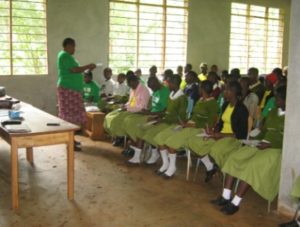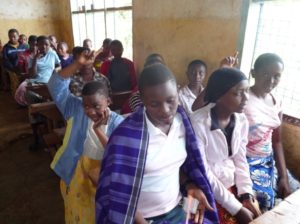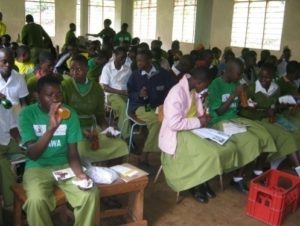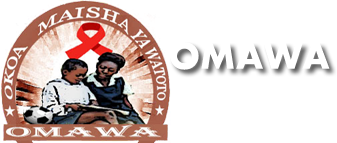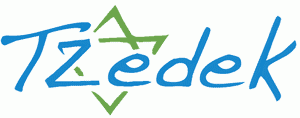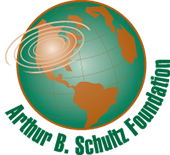HIV/AIDS and SRH Education for Youth
HIV/AIDS
The Tanzania National Bureau of Statistics (NBS), projects the country’s population for 2014 at 47, 421, 7861. With a national HIV prevalence of 4%, Tanzania is one of the 25 countries that globally account for 75% of people living with HIV. While the country still accounts for 5% of the global AIDS related deaths, these have decreased by 44% between 2005 and 2013.
Adult HIV prevalence on the mainland reduced significantly although this reduction has occurred mainly among men. The epidemic among adolescents (15–19 years) has remained stable since 2008, with no decline in adolescent HIV prevalence. Tanzania carries 5 per cent of the global burden of HIV among adolescents.
The HIV epidemic shows strong regional variation, with children, adolescents, women and key populations continuing to be disproportionately affected. Mainland Tanzania has a generalized epidemic, while in Zanzibar, HIV prevalence is concentrated among key populations.
HIV/AIDS contribute poverty in communities in Tanzania. Most of orphans and vulnerable youth (OVY) around the rural areas are idle after completed their primary and secondary education, due to poverty level incidence they remains without any form of life skills to guarantee their future. They resort to commercial sex, early marriages which results into early pregnancies and HIV/AIDS.
OMAWA aim to prevent further HIV infections among youth and other people in the communities through meeting the following objectives;
Objective 1: Promote safer sexual behaviors among general population (men, women and youth) through peer education, community mobilization and culturally sensitive Information, Education and Communication (IEC)
The following activities are organized by OMAWA to meet the objective
- Conduct peer education training and cascade to in school and out of school youth aged 10 to 24.
- Conduct peer education among in school and out-of-school youths using interpersonal interactions, drama, sports, debates, songs in communities.
- Carry out group/team mobilization.
- Develop and disseminate messages through mass media communication.
- Develop, print and disseminate culturally sensitive IEC materials.
- Review and translate IEC materials into local language (Kiswahili).
- Parent-child communication (targeting adults and youth).
- Train youth in life skills and self-help projects.
- Sensitize and mobilize communities, chiefs and traditional healers on HIV and AIDS,
Objective 2: Improve personal protection and promote condom use by provision and distribution in outlets.
Activities organized by OMAWA to meet the objective are;
- Establish and operate at least two youth friendly corners in each of the schools.
- Train volunteers on condom distribution, safe sexual practices and establish condom distribution networks/outlets.
- Map and inform youth about condom outlet sites
- Collaborate with other partners in distributing condoms.
- Conduct sensitization/community mobilization on correct and consistent use of condoms
- Train youth through volunteers on correct use of condoms.
Adolescent sexual and reproductive health
For millions of young people around the world, the onset of adolescence brings not only changes to their bodies but also new vulnerabilities to human rights abuses, particularly in the arenas of sexuality, marriage and childbearing.
Thousands of girls in Moshi rural district are coerced into unwanted sex or marriage, putting them at risk of unwanted pregnancies, unsafe abortions, sexually transmitted infections (STIs) including HIV, and dangerous childbirth. Adolescent boys are at risk, as well. Young people – both boys and girls – are disproportionately affected by HIV.
Yet too many young people face barriers to reproductive health information and care. Even those able to find accurate information about their health and rights may be unable to access the services needed to protect their health.
Supporting adolescents’ health and rights
OMAWA supports adolescents’ sexual and reproductive health in Moshi rural district. OMAWA provides access to comprehensive sexuality education; services to prevent STIs and counseling on family planning. We also empower young people to know and exercise their rights – including the right to delay marriage and the right to refuse unwanted sexual advances.
Programs that OMAWA uses to expose youth to information about adolescent sexual reproductive health and healthy behavior
Peer education: refers to the use of trained peer educators to educate their peers on various health issues and skills building. It is one of the most commonly used approaches by OMAWA to reach youth with information on HIV/AIDS, gender education and SRH. OMAWA organize two weeks training for peer educators and peer coaches in Moshi rural district. They attend training on sexual reproductive health, HIV/AIDS, life skills, sports coaching and gender education. After the training they are allocated to different programs based on their competency during the training. Youth are comfortable when talking to his age met so through this peer education we have seen some success. Peer educators are assigned different roles from leading groups during outreaches to train and prepare youth teams for matches.
Edutainment: is the use of entertainment activities to attract youth to a venue and then pass health promotion or disease prevention messages to them. It includes use of folk media/drama, music/dance, puppetry, video clips, and fashion and beauty pageants etc. This approach provides an attractive environment to reach youth with information while entertaining them. Edutainment can be combined with provision of outreach SRH services such as provision of contraceptive methods, testing and counseling or screening for reproductive tract infections.
Edusports: Similar to edutainment, edusports uses sports to bring together young people and reach them with information and services. The primary target group is the players with the spectators and supporters as the secondary target group. Of these the main sport is football for both boys and girls. OMAWA organizes a local football league, league matches for both girls and boys in the rural areas that is played throughout the year, the league is played according to age, for example under 14, under 16 and under 18. Youth loves to play football, the matches attracts so many fans mostly youth, There are prizes (trophies) to be won at the end of the league all kits are printed sexual reproductive health messages and at the end of every match both players and fans have time to listen to peer educators, peer coaches and adult behavior influencers who delivers speeches about sexual reproductive health, HIV/AIDS and life skills and also players and fans are provided with fliers, brochures and sexual reproductive kit which contain messages on sexual reproductive health education, HIV/AIDS and life skills, in this way we always reaches many youth in the area.
Youth Support Structures: These are ‘safe spaces’ such as youth clubs (health or empowerment), youth centers, and income generating groups. The structures act as meeting points for youth in a ‘safe’ environment that does not raise eye brows. This approach has been found to be especially useful in reaching girls with information and services on SRH.
Mass Media: is the use of print and electronic media such as newspapers, television, radio, leaflets, brochures, comic booklets, posters, music, and hotlines to educate youth on various health issues. Focused multi-pronged mass media campaigns with clear messages are effective at facilitating behavior change. This mode of communication is popular with young people and provides a cost effective way of reaching youth with information.
Life Skills and Education: is an evidence-based approach that can reach a large number of youth with information and skills they need to achieve better SRH outcomes. It is used with both in- and out-of-school youth. OMAWA support the education of youth through scholarships program. An important finding of the BSS is that in-school youth who had correct knowledge about pregnancy and HIV/AIDS prevention methods seemed to exhibit safer behaviors than the out-of school, suggesting that education played an important role in converting knowledge into practice.
Mentorship is the use of older youth to mentor younger youth to achieve positive SRH outcomes.
Adult Behavior Influencers: These adults are trained to reach out to youth either in the community or within an institution with information and/or services. They can be parents/guardians, teachers or service providers.
OMAWA partners with other NGOs, local governments, civil society, young people and youth-serving organizations to actively promote and protect the sexual and reproductive health and human rights of adolescents.
